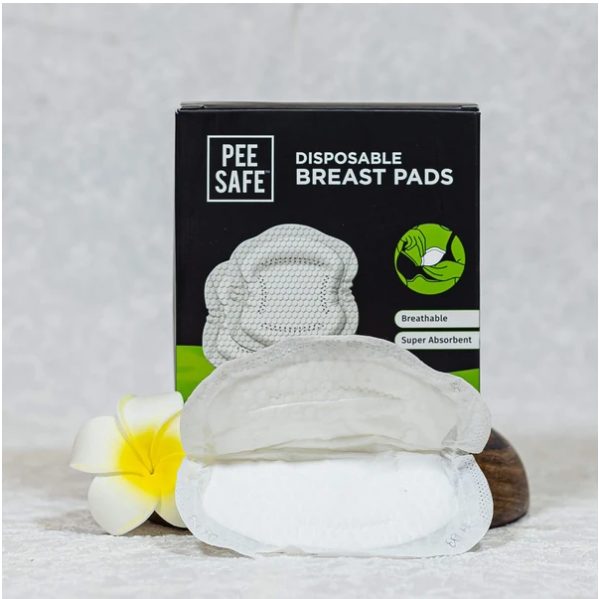Breastfeeding is one of the most satisfying and rewarding experiences for a mother. New mothers often get a lot of advice on how to nurse their babies, what to eat, etc. A quick web search also brings forward a plethora of results on breastfeeding, which can prove highly confusing. As per statistics, only about 44% of new mothers are able to breastfeed their babies within an hour of giving birth. On this World Breastfeeding Day, there is a need to debunk several myths around this practice and also make new mothers aware of the various convenient options they have to help them breastfeed conveniently. Let us take a look at some facts about breastfeeding at the outset.
While the mother may not be able to produce much milk for the first three to four days, she does make colostrum. This is a thick, yellowish, concentrated liquid, known as the “first milk”. It contains all the essential nutrients that a baby needs in the initial hours and days after birth. It is important to understand that the production of milk increases gradually as the baby starts to nurse well.

Should breastfeeding mothers only eat bland food?
It takes a while for the food that you have eaten to be broken down and utilized for making breast milk. During this time, most of the upsetting factors have already been broken down. The only thing to watch out for is any food that might be allergic to the baby, such as seafood.
Does feeding for a long time make it difficult for babies to wean?
All babies are different and some nurse longer than others. It is advisable to wean only when both the mother and the baby are ready for it. What’s more, is that breastfeeding is effective as a birth control method provided certain other criteria are met. For instance, when a woman is breastfeeding exclusively in the first six months after giving birth, nursing at least every four to six hours and not got her period again.
Can feeding make breasts sag?
There is no study to prove that feeding can cause breasts to sag. Many mothers do not breastfeed or do so only for a short duration because they are apprehensive that this will make their breasts sag. However, the sagging of breasts can occur in women who have had many pregnancies over time.
Caring for breastfeeding mothers
Breastfeeding should only bring happiness and not discomfort. To make the initial months more comforting, try using Pee Safe Disposable Breast Pads, an absolute lifesaver for nursing mothers. These breast pads draw excess milk away from the skin on to the pad and avoid leakages. They have elastic sides for perfect fit and are also very thin, making it discreet under your clothing.
To advise on postnatal care, and provide education and support for breastfeeding, new mothers can opt for Portea Medical’s New Born Baby Care and Mother Care (Kanga and Roo) program. Not everyone has the luxury of family support and may need to be on their own. It is here that Portea’s package comes in handy. Under this service, the caregiver provides optimum baby care along with proper emotional and physical support (like massages, nutrition advice, etc) to the mother. Their lactation practitioner also helps with the right advice and feedback on breastfeeding.
Apart from the right advice, diet and exercise also play an important role in breastfeeding mothers. Yoga is a holistic workout that will not only benefit them physically in terms of losing weight but also ensure their emotional well-being post-pregnancy. Apps such as the one offered by SARVA Yoga can help them in this regard. They offer yoga in 25 different forms to suit individual needs. Here are some yoga asanas that new mothers can try with some expert advice from practitioners at SARVA.
Cat Cow Pose or Marjaiasna/Bitilasana
The cat-cow pose can help in understanding the neutral. Be on your all fours on the ground. Round your back upwards while inhaling and arch your back while exhaling. Repeat the position until your spine reaches the neutral. Take note of the feeling of your experience after getting up.
Downward-Facing Dog Pose or Adho Mukha śvānāsana
The downward-facing dog pose can help you have those strong muscles for the right posture. Be on your all fours on the ground and straighten your legs to move your hips upward. Try to reach them from the back of the room. Press your hands strongly into the ground and allow your neck to relax. While you are breathing deeply, try to bring your navel close to your spine.
Bridge Pose
This yoga pose is also helpful in relieving any tension in the neck, spine, and chest muscles. Bridge pose also relieves digestion and sore leg problems.
In conclusion
It is important for mothers to establish a feeding pattern in their babies which will also help in the longer run. Newborns tend to sleep a lot and not waking them up can leave them hungry and cranky at the same time, making it difficult for them to feed. It is also a must to encourage new mothers to speak about any doubts they may have about breastfeeding. Voicing their concerns can help women distinguish fact from fiction and enjoy this beautiful phase that is motherhood.

